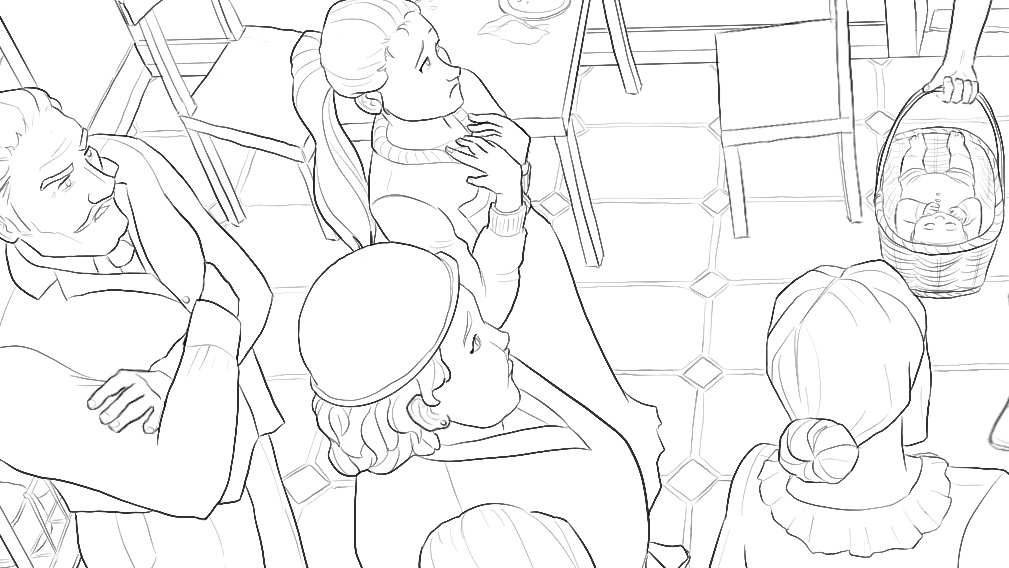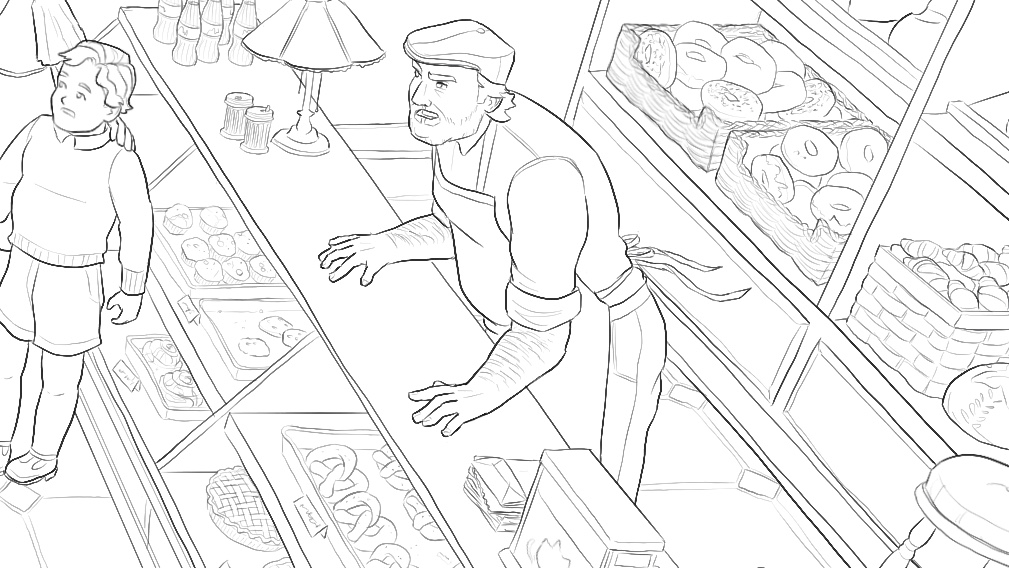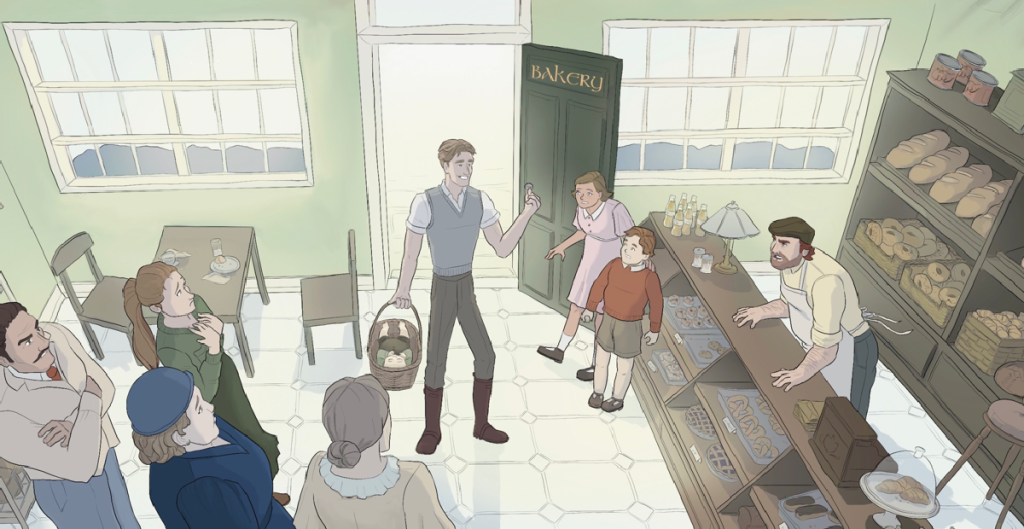How to Draw from Imagination – Easy Tips that Work
How to draw from imagination using simple tips! Forget staring at a blank page. Kiss goodbye wonky designs that fall flat. Stop wondering what dark magic allows artists to create amazing worlds with nothing but a pencil. This article teaches how to improve the quality of your original artworks.
Simply try out some of the advice in this article to learn how to draw cool things from your head. For example, learn how to better observe and fill your visual library. Additionally, practice replicating existing things. Also, memorize proportions and 3d forms. Furthermore, discover how to combine things to create unique art. In summary, learning about these topics will help you draw better from imagination.
What type of artists is this article for? This article is great for artists looking to create better original artworks. Likewise, it is also intended for those trying to create fantasy art, product designs, or comics.
First Understand What Imagination Is
Drawing from imagination is kind of a funny concept. Some will say there is no such thing as imagination. But let’s not get overly technical here. It basically means drawing made up things. It can also mean drawing without any references in front of you.
But, the main thing you probably want to understand is how to draw from imagination. And how to do it well. For years, I wondered the same thing. What I learned is pretty simple. To draw from your head, you must first fill your head with information. And the way to fill your head is to learn to observe, replicate, study, memorize, and combine. Continue reading below to learn how to do each of these things.
Fill Your Visual Library – Observe
One important step to drawing from your imagination is to first observe. Observing things will help ingrain them into your visual library, which is another way of saying your memory.
Pick one subject you want to get good at drawing. It may be people, animals, environments, movement, lighting, etc. Just try to narrow down and focus on one of these subjects at a time. Then, start observing the characteristics of these things.
For example, if you want to draw faces, start by looking at faces. Like really look. Determine how they move, their proportions, their volumes, etc. You may have seen countless faces before. However, if you want to draw faces well, it helps to try to memorize their specific characteristics.
Also, know that you can add things to your visual memory at any time. It can be subconsciously, during your lunch break, or during dedicated study time. Doing so will help make it easier to depict them from your imagination next time you sit down to draw. Just try to recall the things you observed and implement them into your art.
Below you can see characters created from imagination. It took years of filling my visual memory to improve the way I draw people. But as the years went by I kept at it. And now I am able to draw characters in pretty complex compositions, such as this one. And as I want to continue improving, I still try to keep filling my visual memory.

Replicate Existing Things Before Creating Your Own
Another tip to draw better from your imagination is to replicate existing things. For example, this can be as simple as sketching from life or practicing drawing realism. Also, it can include making copies of existing art. (Do this just for study purposes, not to steal of course.) Additionally, practice replicating how perspective works in order to understand it. Moreover, take notes on the things you want to draw better.
The purpose of replicating existing things is to understand them better. Try to focus on the specific things you want to improve at drawing from your head. To do so, you will need to find some references. If needed, learn some tips on using references in your art.
Here is a specific example on how and why to replicate things. For example, if you want to draw a bakery, first practice drawing them. Replicating different bakeries will help you to notice the intricate details of what defines them. This will ingrain those characteristics into your memory. Then, you will be better at creating your own bakery artwork.
Furthermore, after replicating existing things, make sure to test your knowledge. Replicating helps fill your brain with information. But actually putting that knowledge into action will help cement it into your memory. Moreover, testing your knowledge will help you to know if you did enough studying and practice. For instance, if you do not like the way you draw bakeries from imagination, practice replicating how bakeries look using references again. Afterwards, try again to create a bakery from imagination, and your art should be much improved.
Memorize Proportions to Draw from Imagination
Next is a super helpful tip to improve imaginative drawings. This tip is to memorize proportions. Basically, this means you should have a rough idea of how big things are and how they compare in size.
This tip is helpful for drawing anatomically correct animals and humans from imagination. For instance, it is helpful to know how big a hand should be compared to a face. Similarly, it can be helpful to study the 8 heads rule, which is a method for keeping figures proportional. Another thing to study are the general proportions of faces. For example, eyes are usually spaced a certain width apart. Moreover, try memorizing the differences between young, versus middle aged, versus old people.
Additionally, this tip can also be applied to drawing inanimate objects better as well. For instance, let’s say you want to draw a bakery scene from imagination. It will be helpful to know how tall doors usually are, as well as windows and shelves. Likewise, it will be helpful to know how big different baked goods are.
Of course, you can always break away from realism. Feel free to stylize and use unrealistic proportions. However, it helps to have a general idea of how tall or small things are so you do not unintentionally draw them at the wrong scale.
Following this tip will help you better craft things from imagination. Even without reference, you should have a general idea of how to draw things at the right scale and size. This will help your drawings look more technically accurate.
Memorize 3D Forms to Draw from Imagination
Here is a similar tip to the last one. This tip is to memorize three dimensional forms. Yes, artwork is commonly created on a flat, two dimensional plane. However, the goal of art is usually to give a sense of depth. This allusion of depth is created by knowing how to depict forms as 3d. Basically, this just means learning how to draw cubes instead of squares. Cones instead of triangles. And spheres instead of circles.
To use this tip, try thinking of a subject matter as a simple 3d form. For example, a basket can be thought of as a rectangular prism. Or a lamp shade can be thought of as a cone. Try to apply this thinking into anything you want to draw from imagination. Simply start by drawing the basic simplified form. Then, add details to make it more recognizable.
Additionally, try to memorize the 3d forms of things you draw often. For example, maybe you draw a lot of people. Then try to break down and memorize all the 3d forms that make up a human. For example, a head can be thought of as a sphere. A palm can be thought of as a rectangular prism. A foot can be thought of as a wedge. Now, to more easily draw a human from imagination, just try to recall these forms.
Rotating & Stretching 3D Forms Makes Imaginative Drawing Easier
Also, be sure to practice rotating 3d forms. For example, make sure you know how to draw a rectangular prism from any angle. This way, if you want to add something rectangular into your drawing, you will be able to add it into your drawing at the correct angle and match the perspective.
Similarly, knowing how to stretch and bend 3d forms is a helpful skill. This way you can better depict organic or squishy forms from your imagination as well. For instance, you may want to draw something squashed or bent, such as pillow or sandwich.
Following this tip of memorizing 3d forms will make drawing from imagination so much easier. Forget struggling how to get perspective right or trying to add depth. Instead, just start by sketching out basic 3d forms. Then, simply turn them into anything you can imagine.
These tips are super helpful when designing characters. For even more specific advice on drawing characters consistently and from different angles read tips about making character reference sheets.

How to Draw from Imagination Using Combination
Now, here is a final piece of advice to make drawing from imagination easier. Simply, combine a plethora of things together. Rely on your visual memory, existing references, your knowledge of proportions, and your understanding of 3d forms.
Also, do not be limited by just the things in your brain. Creating a unique and original artwork does not have to come from within. Sometimes, to depict the things in your imagination you will need to rely on existing things. And that is okay.
For instance, you may imagine a scene set in a bakery. You envision bakery cases filled with all sorts of baked goods. You come up with a baker character with an annoying personality. However, to really bring this vision to life, you may need to do a few Google image searches for references, and that is okay.
Just be sure not to reference one thing too closely; otherwise, you will just be copying. To truly create something from your imagination it must not be too close to reality. So make sure to alter and mix things up. Then, you will still have created something unique – something that can be called your own creation. And of course, something that you will own the copyright for.
As you can see, using these tips on combination will help you to create unique and original artwork.

Summary of How to Draw from Imagination
Drawing from your head can be tough. But now you have learned how to make it easier. Just try building your visual memory, using references, memorizing proportions, and improving your ability to draw 3d forms. Doing these things will help kick your original artworks up a notch. Not to mention, it will help improve your general drawing abilities as well.
If you enjoyed these tips, be sure to check out some of my other art advice as well.
Likewise, if you want to see more content like this, you can do me a little favor. Just leave a comment or share this post. Thanks!
And, if you like the comic panels in this post, you can view the rest of the comic in color and for free! Simply join my mailing list to get your free 30 panel comic.


Discussion ¬